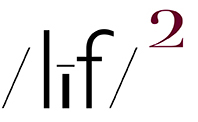from quotidian (kitchen life) ~ (embiggenable) • iPhone
from kitchen sink ~ (embiggenable) • iPhone
BACK HOME AFTER MY WEEK IN MAINE. Barely settled back in and I'm packing for my week-starting this Sunday-at the South Jersey Shore. The 2 places on the Atlantic Ocean could not be more different - the Maine shore is rocky and cool, the Jersey shore is sandy and hot / humid (and my burden to bear). Then, at the end of the Jersey week, it's straight to Rist Camp for 6 weeks-with a stop at home to pick up the cat. The end of the Rist Camp sojourn will complete the San Diego, CA. / Santa Fe, NM / Pittsburgh, PA / Damariscotte, MN / Stone Harbor, NJ / Newcomb, NY ramble.
I am hoping that my stay at Rist Camp-on an isolated, hill-top overlooking the mountains and a lake-will provide me with some much needed quiet / restful time for contemplation, re: my relationship with photography / picture making. Specically, addressing both my relationship with this blog and the notion of aggressively seeking gallery representation for one or more of my bodies of work.
In the cause of seeking gallery representation, I am purchasing a new printer for use in creating folios of exhibition quality prints of several of my bodies of work. First up being my kitchen sink and quotidian work, starting with updates to those galleries on my WORK page. FYI, I am first concentrating on those bodies of work cuz I believe them to be my strongest and most cohesive bodies of work and bodies of work for which I can pursue the making of pictures on a regular basis.
Re: this blog - it will most likely sputter along as it has been during the recent past. That is, without a specific intent or direction. However, my desire is to keep the focus on the medium and it apparatus (aka: practices and conventions) as opposed to gear obsession-ala VSL-or a journal of the trials and tribulations of my personal life-ala TOP-cuz, (paraphrasing Ricky Nelson) if that were all there was to write, I rather drive a truck..
PS After my recent selection for Mike Johnston's Baker's Dozen: In the Museum, I am prepping a few picture candidates for a possible submission to Baker's Dozen: Grandkids:
from the new snapshot ~ (embiggenable) • iPhone
